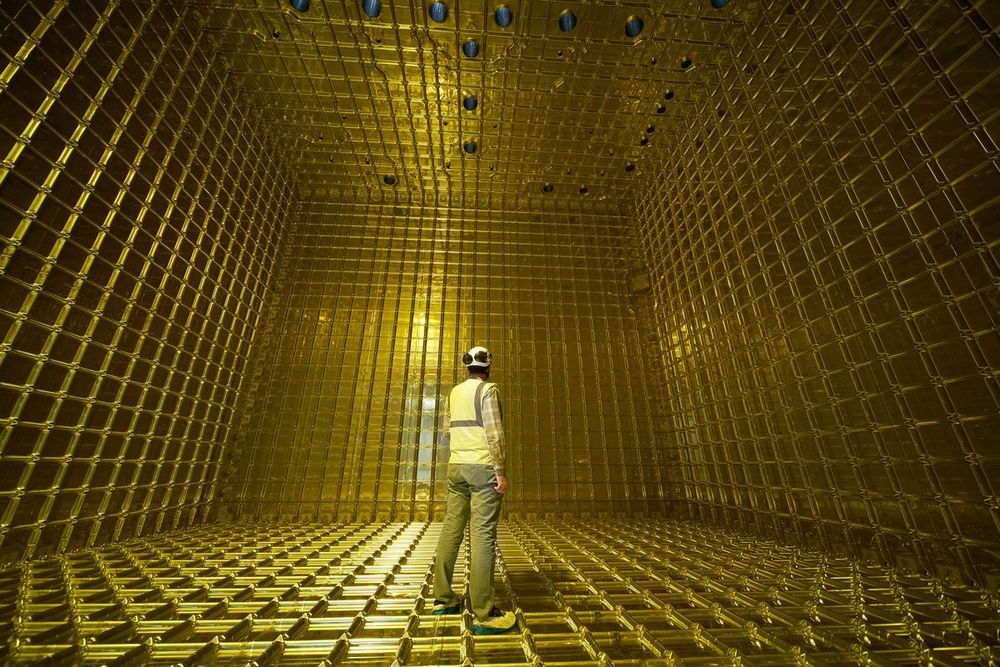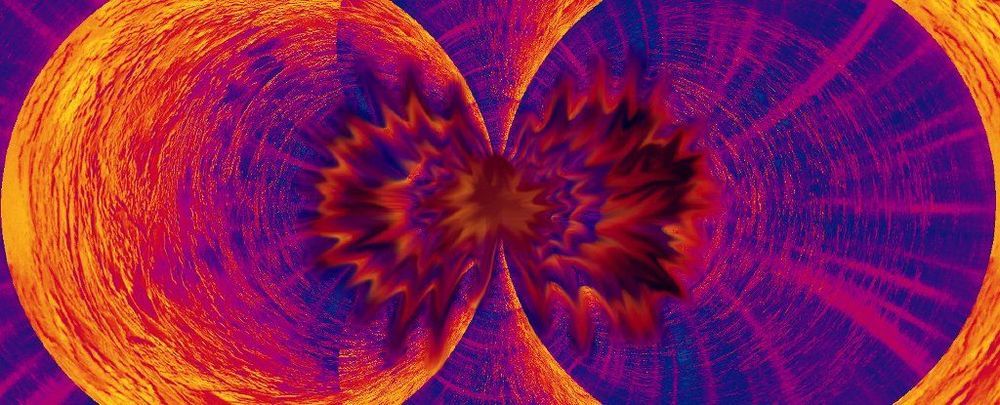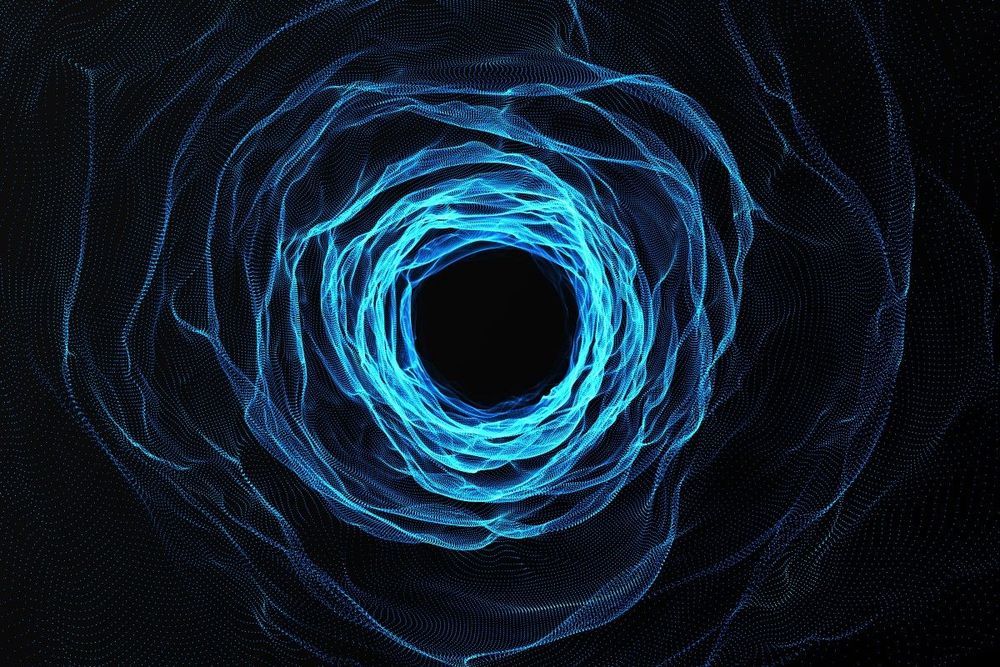Researchers hope an underground experiment will reveal an elusive particle.



A new quantum physics experiment just lent evidence to a mind-boggling idea that was previously limited to the realm of theory, according to the MIT Technology Review — that under the right conditions, two people can observe the same event, see two different things happen, and both be correct.
According to research shared to the preprint server arXiv on Tuesday, physicists from Heriot-Watt University demonstrated for the first time how two people can experience different realities by recreating a classic quantum physics thought experiment.
The experiment involves two people observing a single photon, the smallest quantifiable unit of light that can act as either a particle or a wave under different conditions.

But no other new particles have materialized at the LHC, leaving open many mysteries about the universe that the Standard Model doesn’t address. A debate has ensued over whether to build an even more enormous successor to the LHC — a proposed machine 100 kilometers in circumference, possibly in Switzerland or China — to continue the search for new physics.
Physicists say there’s much we can still learn from the Higgs boson itself. What’s known is that the particle’s existence confirms a 55-year-old theory about the origin of mass in the universe. Its discovery won the 2013 Nobel Prize for Peter Higgs and François Englert, two of six theorists who proposed this mass-generating mechanism in the 1960s. The mechanism involves a field permeating all of space. The Higgs particle is a ripple, or quantum fluctuation, in this Higgs field. Because quantum mechanics tangles up the particles and fields of nature, the presence of the Higgs field spills over into other quantum fields; it’s this coupling that gives their associated particles mass.
But physicists understand little about the omnipresent Higgs field, or the fateful moment in the early universe when it suddenly shifted from having zero value everywhere (or in other words, not existing) into its current, uniformly valued state. That shift, or “symmetry-breaking” event, instantly rendered quarks, electrons and many other fundamental particles massive, which led them to form atoms and all the other structures seen in the cosmos.
Scientists at the University of Rochester’s Laboratory for Laser Energetics have achieved a plasma research first. They were able to convert the liquid metal deuterium to the plasma state and directly observe the interaction threshold.
For the first time, researchers at the University of Rochester’s Laboratory for Laser Energetics (LLE) have found a way to turn a liquid metal into a plasma and to observe the temperature where a liquid under high-density conditions crosses over to a plasma state. Their observations, published in Physical Review Letters, have implications for better understanding stars and planets and could aid in the realization of controlled nuclear fusion — a promising alternative energy source whose realization has eluded scientists for decades. The research is supported by the US Department of Energy and the National Nuclear Security Administration.
What is a Plasma?
Plasmas consist of a hot soup of free moving electrons and ions — atoms that have lost their electrons — that easily conducts electricity. Although plasmas are not common naturally on Earth, they comprise most of the matter in the observable universe, such as the surface of the sun. Scientists are able to generate artificial plasmas here on Earth, typically by heating a gas to thousands of degrees Fahrenheit, which strips the atoms of their electrons. On a smaller scale, this is the same process that allows plasma TVs and neon signs to “glow”: electricity excites the atoms of a neon gas, causing neon to enter a plasma state and emit photons of light.

Discovery allows scientists to look at how 2-D materials move with ultrafast precision.
Using a never-before-seen technique, scientists have found a new way to use some of the world’s most powerful X-rays to uncover how atoms move in a single atomic sheet at ultrafast speeds.
The study, led by researchers at the U.S. Department of Energy’s (DOE) Argonne National Laboratory and in collaboration with other institutions, including the University of Washington and DOE’s SLAC National Accelerator Laboratory, developed a new technique called ultrafast surface X-ray scattering. This technique revealed the changing structure of an atomically thin two-dimensional crystal after it was excited with an optical laser pulse.

The concept of antimatter has delighted sci-fi fans for years, but it also poses a real question for physicists. Mathematically speaking, it makes sense that for every type of particle in our universe there exists a corresponding antiparticle which is the same but with the opposite charge — so to correspond with the electron, for example, there should be an antielectron, also known as a positron. When antimatter and matter come into contact, they both destroy each other in a flash of energy.
When the Big Bang happened, it should have created equal amounts of both matter and antimatter. And yet matter is everywhere and there is hardly any antimatter in our universe today. Why is that?
A new experiment from CERN, the European Organization for Nuclear Research, has been tackling the question by looking at how matter and antimatter could react differently to Earth’s gravitational field. Physicists think that antimatter could fall at a different rate than matter, which would help to explain why it is less prevalent. But in order to test this, they need to create antimatter particles such as positronium atoms. These are pairs of one electron and one positron, but they only live for a fraction of a second — 142 nanoseconds to be exact — so there isn’t enough time to perform experiments on them.

A new method for analysing the entanglement of scrambled particles could tell us how the Universe still keeps track of information contained by particles that disappear into black holes. It won’t get our quantum information back, but it might at least tell us what happened to it.
Physicists Beni Yoshida from the Perimeter Institute in Canada and Norman Yao from the University of California, Berkeley, have proposed a way to distinguish scrambled quantum information from the noise of meaningless chaos.
While the concept promises a bunch of potential applications in the emerging field of quantum technology, it’s in understanding what’s going on inside the Universe’s most paradoxical places that it might have its biggest pay-off.

Then the 2017 DoD disclosure occurred, directly contradicting the findings in the Condon Report. We realized we had not discovered all there was to discover — not by a long shot.
AATIP succeeded where others failed simply because our understanding of the physics finally caught up to our observations.
Today, much of our government’s business is conducted behind closed doors, and mostly for good reason.
There are numerous secret programs, secret agencies, secret committees of Congress, secret laws, and even a secret courtroom. Secrecy allows our government to collect and share information, and even make decisions that otherwise could fall into enemy hands or be exploited.
Ultimately, the purpose of keeping things secret in the government is to protect sources and methods and ensure the flow and integrity of information is maintained so decision-makers can make decisions with the very best data available. It’s no surprise that governments will go to great lengths to protect the information they consider sensitive. In fact, the more sensitive information is perceived, the more it is protected.

The universe is almost devoid of antimatter, and physicists haven’t yet figured out why. Discovering any slight difference between the behaviour of antimatter and matter in Earth’s gravitational field could shed light on this question. Positronium atoms, which consist of an electron and a positron, are one type of atimatter atoms being considered to test whether antimatter falls at the same rate as matter in Earth’s gravitational field. But they are short-lived, lasting a mere 142 nanoseconds – too little to perform an antimatter gravity experiment. Researchers are therefore actively seeking tricks to make sources of positronium atoms that live longer. In a paper published today in the journal Physical Review A, the AEgIS collaboration at CERN describes a new way of making long-lived positronium.
To be useful for antimatter gravity experiments, a source of positronium atoms needs to produce long-lived atoms in large numbers, and with known velocities that can be controlled and are unaffected by disturbances such as electric and magnetic fields. The new AEgIS source ticks all of these boxes, producing some 80 000 positronium atoms per minute that last 1140 nanoseconds each and have a known velocity (between 70 and 120 kilometres per second) that can be controlled with a high precision (10 kilometres per second).
The trick? Using a special positron-to-positronium converter to produce the atoms and a single flash of ultraviolet laser light that kills two birds with one stone. The laser brings the atoms from the lowest-energy electronic state to a long-lived higher-energy state and can select among all of the atoms only those with a certain velocity.

A team of researchers led by Dr. Nazmul Karim and Prof Sir Kostya Novoselov at The University of Manchester have developed a method to produce scalable graphene-based yarn.
Multi-functional wearable e-textiles have been a focus of much attention due to their great potential for healthcare, sportswear, fitness and aerospace applications.
Graphene has been considered a potentially good material for these types of applications due to its high conductivity, and flexibility. Every atom in graphene is exposed to its environment allowing it to sense changes in its surroundings, making it an ideal material for sensors.